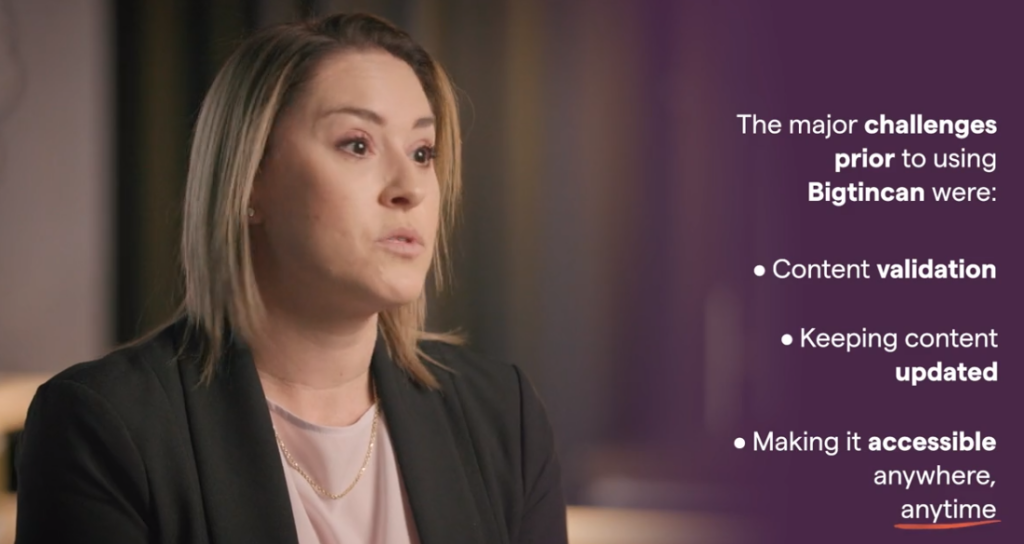Winning deals in today’s uber-competitive market requires active buyer engagement. And that’s not just a sales problem, it’s an everyone problem — especially marketing.
After all, marketing-created content shared by sales reps is a huge factor in building that engagement and fostering better conversations with buyers.
But we hear time and time again that sales reps have a hard time finding the right content to do the job — and not because it doesn’t exist. In fact, data shows that 65% of marketing-created content goes unused!
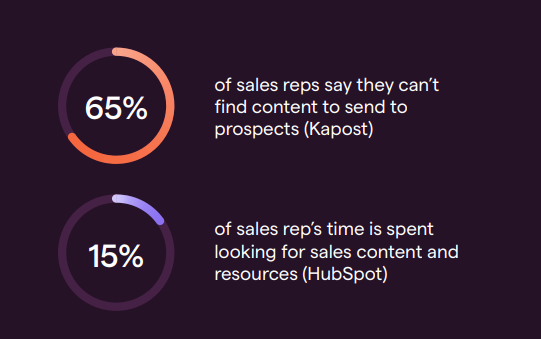
Page snippet from Sales productivity: Taking back seller time to win more opportunities
So while conversations around digital sales platforms and sales enablement typically focus on sales and enablement teams, marketing has a stake in them, too — a big one. Here’s why.
1. Sellers need easy access to content
Research from Salesforce and other sources shows that sales reps spend 30% of their time searching for content and use an average of six to ten different repositories.
Weighed down by search fatigue, many reps give up the search and either create their own content or settle for using outdated materials so they can get back to selling.
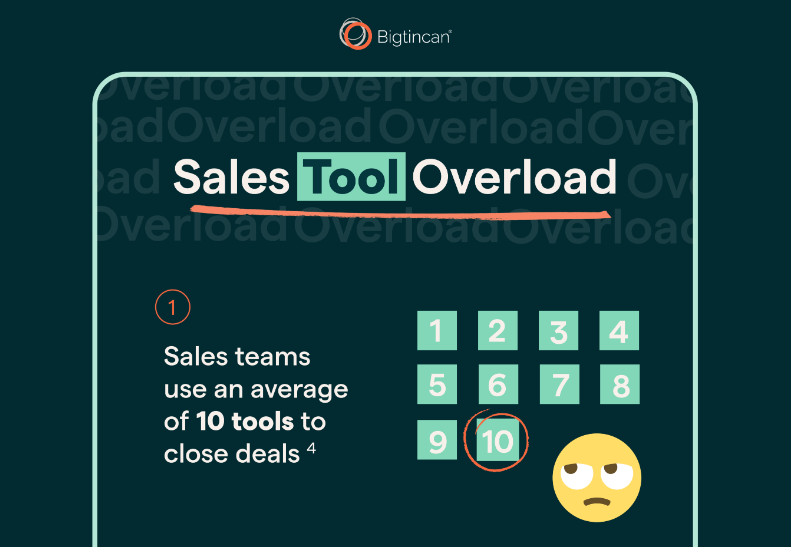
See full infographic and article: Is your business suffering from sales tool overload? Here’s how to tell — and how to solve it.
But giving reps the right content at the right time is critical to gaining the trust of their buyers’, moving them through the funnel, and helping them win deals.
Marketers put a heavy focus on ensuring buyers can find the content we create. Isn’t it time we do the same for our counterparts in sales?
Marketers who want to truly empower their sales teams are deploying digital sales platforms that easily organize content so sellers can find it, learn their habits to create categories of favorite content, and allow them to easily share with prospects and customers to increase buyer engagement.
The right platform helps sellers deliver consistent brand messaging while developing relevant conversations supported by content to bring buyers through the buying journey. All while pulling insightful data that helps with buyer intent for easy follow-up conversations and content sharing.
Marketers receive compelling analytics that offer visibility into what’s being used, what’s working, and what’s not so they can easily adjust and prove ROI.
A shared drive, static portal, or SharePoint repository won’t give you the benefits of a mobile-first, intuitive, AI-powered digital sales platform, which means you’re missing out on:
- Visibility into what’s working
- Pipeline momentum for sales
- Provable ROI
- Natural sales and marketing alignment
- Lower administrative effort
2. Visibility into what’s working
Marketers spend inordinate amounts of time creating customer-facing sales content with little insight into what actually works to drive sales. Sure, a sales rep might say they “like” an asset or “it helped” during a sales cycle. But to gain a seat at the table and drive content strategy, marketers need better insights into how content performs.
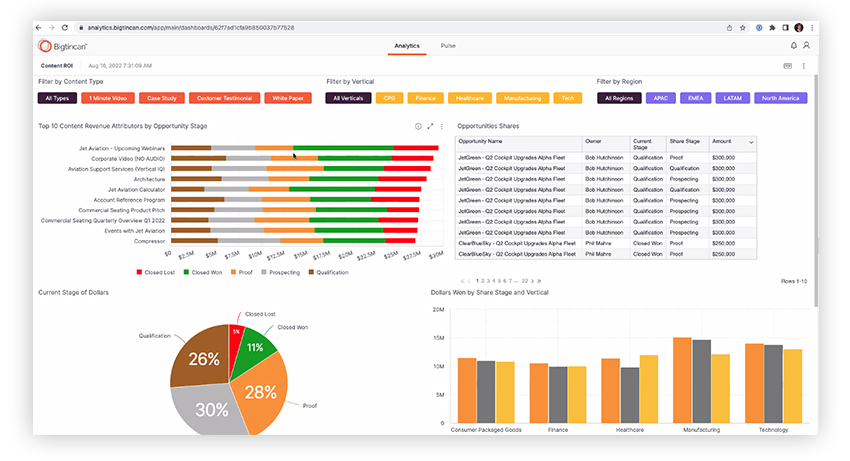
With a digital sales platform, marketers can monitor key data analytics (as shown above) for every content asset that reps use, including content views and engagement—for both buyers and sellers—as well as follow-up emails sent through the digital sales room.
Related: Best digital sales rooms for 2023 (and how to use them)
By understanding which content works, marketers can build better strategies for existing content and make informed decisions on content they need in the future to help their sellers win deals.
Marketers can even connect sellers to useful assets with new content alerts, banner links, and more. Whether field reps are waiting for a new asset or you’re launching a new product line or even need quick uptake from dealers and distributors, the right digital sales platform gives marketers a simple way to put the most important content on your seller’s radar.
3. Build pipeline momentum for sales
The right sales enablement platform allows marketing to give sales reps “playbooks” of content contained in custom categories relevant to your buyers and sales process that’s been proven to work in similar selling scenarios.
Combined with just-in-time, peer, and microlearning that shares pitches and conversational tips from the sales reps who used that content to successfully win those deals, your reps will enter every sales conversation with increased confidence and a higher likelihood of success at increasing pipeline momentum.
Further reading: How Microlearning Improves Customer Experience…and Closes More Deals
4. Prove marketing ROI with a sales platform
We’re all in agreement that marketing has value, but the people keeping the books still want to see that value in numbers.
The easiest way to prove marketing ROI is by highlighting how marketing content helped contribute to sales wins. With a digital sales platform, you’ll have the insight that’s been elusive in the past.
How to Prove (& Improve) Marketing Value – get the ebook.
Marketers can highlight adoption rates of your sales enablement platform, even drilling down to the channel reps, teams, partners, and regions that are actively engaged. These insights can help you improve field sales reps and channel partner performance, as well as give visibility into buyer engagement between marketing and sales.
A sales enablement platform that unifies learning and collateral can even support your sales training efforts with just-in-time learning campaigns for improved sales readiness. From video and AI coaching (previewed below), peer-to-peer feedback, to gamification, marketers that support skill development can help shorten sales cycles and increase ROI.
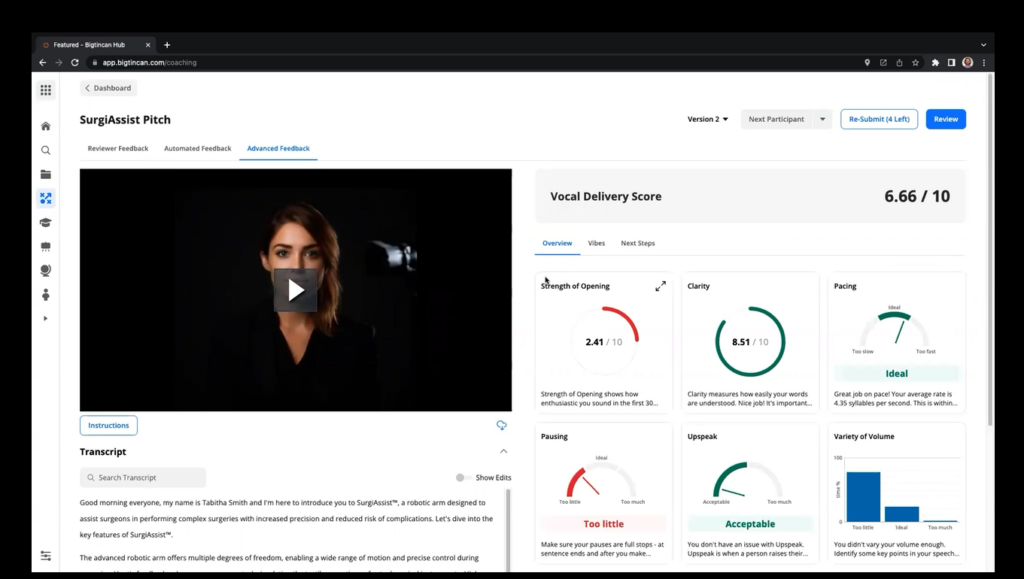
5. Create marketing + sales alignment
Sellers need to add value to the sales process by helping buyers understand their core problem and how it can be solved.
Data shows that today’s modern buyers prefer to self-educate on products and services that can help solve their problems. But despite the preference for self-education, buyers need a sales rep to actually help them make the right decision.
Reps leveraging a digital sales enablement platform have the upper hand in finding the right content that delivers the value and assistance busy buyers need to help them in their buying journey.

Example of a shared, custom-branded portal for go-to-market teams combining collateral, learning, and company communications.
When marketers provide content that helps sales teams promote their objectives and have better conversations with buyers, the alignment gap begins to close naturally.
As marketers gain visibility into how their content is impacting buyer engagement, they can produce more of what sales reps need to move deals forward. A sales enablement platform helps make marketers and sellers working together a natural win-win situation that delivers true revenue impact.
Related: 4 Areas Where Sales and Marketing Can Work in Harmony
For marketers that have compliance regulations, a content enablement and digital sales platform ensures that only the most recent versions are accessed, giving your reps the confidence that whatever they share with clients will be accurate and compliant.
6. Drastically reduce administrative effort
Every marketer has fielded the following question: “Where can I find that content?” And every seller has asked: “Is this the most up-to-date version?”
Both questions are valid, but to answer them takes valuable time, and the buyer is often the one left waiting.
A sales platform helps sellers become more self-sufficient. They can easily access all the content assets they need quickly, whether offline or online, from any device. The time they save not searching for content is time they’ll spend actively selling to prospects.

For marketers, the platform allows for rapid deployment of approved assets, and new content updates are synced and shared across the sales team instantly.
The right digital sales platform adds efficiency to how marketing connects sellers to the right content, giving both parties more time to focus on capturing buyer attention and getting deals done.
Related: How to create and scale a document management system in SharePoint (without hiring extra help)
7. Sales enablement elevates marketing impact
Customer needs and preferences are continually changing, and so are the ways sellers connect with them across the buyer-led journey.
The benefits of a digital sales platform surpass other methods marketers have been using to provide sales reps with the content and information buyers need and want to support their efforts to solve their problems and the confidence needed to choose to buy from you.
Marketers must keep a finger on the pulse of how their efforts impact ROI throughout the organization. The right enablement platform makes it simple to find, show, and prove their contribution toward elevating buyer-seller conversations that win deals and grow revenue.
Hear from Lion Australia on how Bigtincan’s unified platform has allowed them to bring together readiness, analytics, marketing content, and automation, resulting in a 95% uptake of learning content and a 24% increase in performance results.
